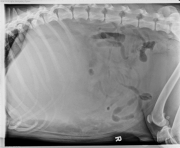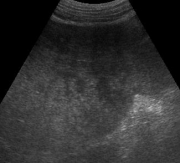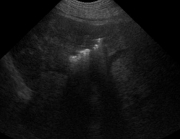This week’s case is an 8 year old male neutered German Shepherd cross with a 48-hour history of lethargy, pale mucous membranes, and a distended abdomen. Bloodwork indicates anemia, neutrophilia, thrombocytopenia, increased ALT and AST, increased CK and GGT, decreased cholesterol and T4.
 Case originally posted on January 29, 2007



Recent Comments